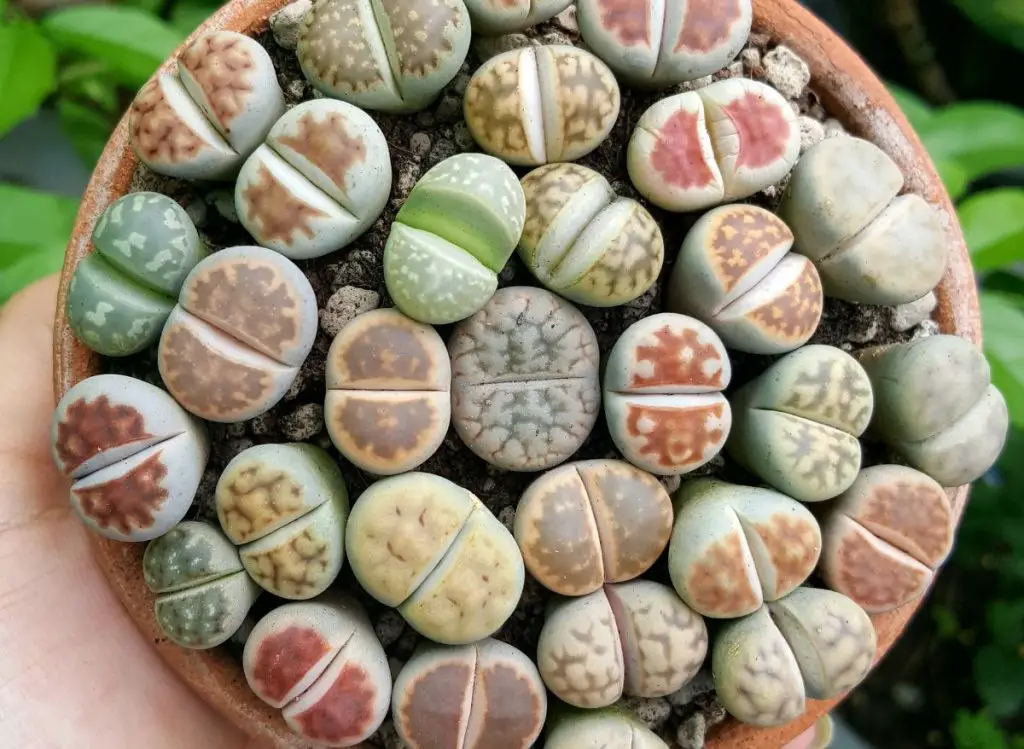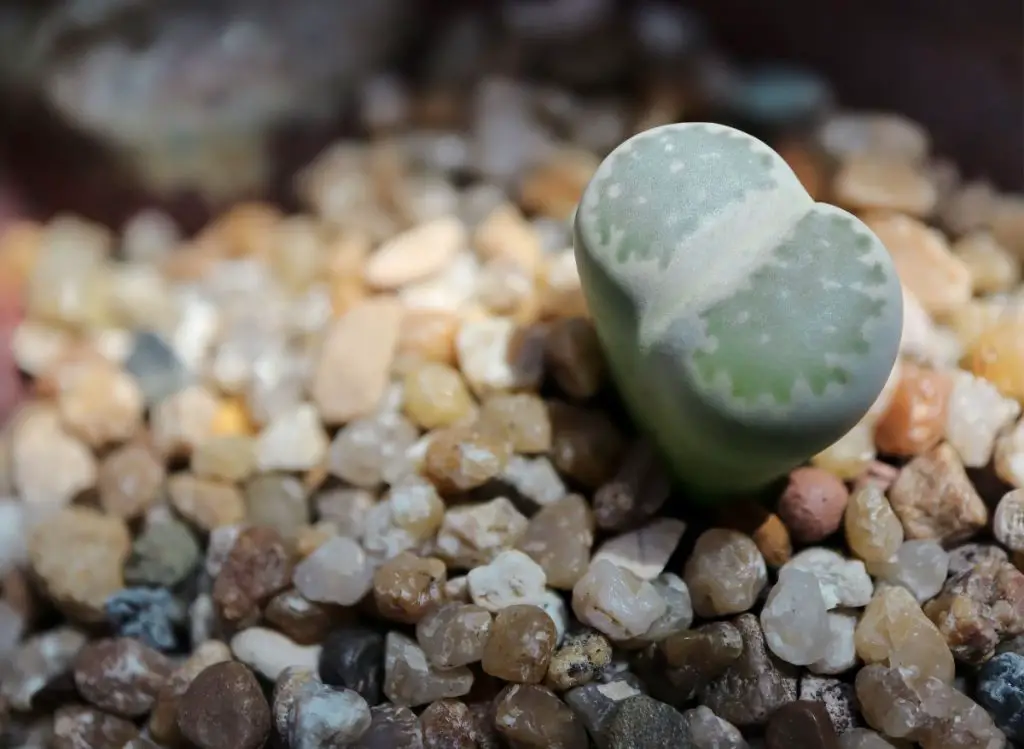
Lithops, also known as living stones, are fascinating and popular succulents that are native to South Africa. Known for their unique appearance and their ability to survive in harsh conditions, these plants have adapted unique characteristics that set them apart from other plants.
Generally, Lithops flower throughout autumn and early winter. Interestingly, Lithops live up to 40 or 50 years; you can even keep the same plant in the same pot for 10 or 20 years with good soil drainage, sufficient bright light, and proper watering (Source: University of Wisconsin-Madison Division of Extension)
Read on to find out everything you need to know about the growth cycle of Lithops and how to care for them at each stage of the development process. Check out this article if you wonder how to deal with splitting Lithops.
Germination
Lithops seeds are small but incredibly resilient and can remain dormant for months before conditions are suitable for germination. Once they have received the favorable temperature and moisture, the seeds will start to sprout.
It is best to germinate lithops seeds in spring when temperatures exceed 20 °C, using the plastic-bag technique commonly used for all succulents (Source: The Mediterranean Garden Society)
Lithops germination process lasts approximately 15 days; during this time, it is recommended not to disturb them. The first leaves produced by Lithops seeds are called cotyledons, and they store energy for the plant until it can begin to photosynthesize.
The two essential elements in growing lithops are a well-lit location and a proper watering regime.
- It is recommended to water them thoroughly at the beginning of the spring and autumn growing seasons and keep them dry in winter and summer.
- Lithops need a lot of sunlight, without which they become elongated. I recommend you keep yours at a south-facing window.
Establishment of a Taproot
Lithops plants, like most succulents, have a well-developed root system with a prominent taproot. A taproot is important for anchoring the plant into the ground and for absorbing nutrients and moisture from the soil.
Generally, the taproot will grow deep into the soil and will become thinner over time as the plant matures. And, Lithops can survive in dry areas because of their capacity to store water. Each plant consists of two succulent leaves fused in an inverted cone, depending on the species. A healthy taproot will allow your plant to regrow when watering it.
In addition, Lithops requires a deep container for the long tap root. They grow slowly and only need to have their soil and pot revived once they start to crowd their space around every four years (Source: New York Botanical Garden)
Pair of Leaves
Lithops plants develop two leaves out of each seed. These leaves called the growth leaves, start off as two thick, fleshy discs that are partially buried in the soil.
Typically, the leaves have a unique texture, with translucent patches that allow light to penetrate while maintaining their camouflaging look. Once the plant has established its leaves, it will begin to photosynthesize and grow, using the stored energy from its cotyledon leaves.
Flower Development
Lithops have a fascinating growth cycle that takes place over the course of several months. The cycle begins in the fall when the plants start to emerge from dormancy. During this time, Lithops will produce new leaves that will be smaller and more colorful than the previous ones. These new leaves will begin to form in the center of the plant, pushing the old leaves aside.
As the new leaves grow, the old leaves will begin to wither and die, which is a natural part of the Lithops growth cycle and should not be a cause of concern. It is important to note that during this stage, the plant should not be watered as it is still in a state of dormancy.

In the winter, Lithops will enter a period of slow growth, which can last several months. During this time, the old leaves will fall away, and the new leaves will begin to spread apart, forming a new pair of Lithops. It is important to monitor the plants carefully during this stage, as they are susceptible to root rot if overwatered. Only water the plant when the soil is completely dry.
In the spring, the Lithops will enter a phase of rapid growth as it prepares to flower, which is an exciting time for Lithops growers, as the plant will produce beautiful, colorful flowers that can range from white and yellow to pink and orange. During this stage, it is important to increase watering to encourage the growth of the flowers.
After the plant has finished flowering, it will enter a phase of slow growth and dormancy, which will last until the fall. During this period, you should decrease watering to allow the soil to dry out completely, which is essential for the plant to store up energy for the next growth cycle.
Lithops plants take several years to reach maturity, and they only bloom after they have reached maturity.
When mature, the Lithops plant will send up a long floral stalk out of the center of the two leaves. The flowers themselves are stunning, with bright colors ranging from shades of pink to yellow to white.
Once pollinated, the flower will develop into a seed pod, where it will produce seeds that will grow into new Lithops plants.
Splitting and Propagation
One of the most interesting aspects of Lithops’ growth cycle is its method of reproducing. When the plant starts to split, it is a sign that it’s time for the Lithops to propagate.
The plant splits into two, revealing a new set of leaves. Over time, the old leaves will wither away, and the new leaves will completely take over. The old leaves will dry up and wither down to the soil level, providing nutrients for the new leaves to grow.
What to read next:
- Bringing Your Overgrown Succulents Back to Life: A Helpful Guide to Cleaning Them Up.
- Choosing the Proper Gloves for Cactus Gardening.
- How Long Do Succulents Actually Live Without Water (This Long!)
Wrapping Up
The Lithops growth cycle is a fascinating process that takes time and patience to witness and understand.
From seedling to maturity, Lithops plant has evolved extraordinary adaptations that have allowed it to adapt to some of the harshest environments on earth.
As you care for your Lithops plant, take note of its unique growth cycle, and appreciate the time and care that it takes for this plant to mature into its full form. With the right care, Lithops can live for decades and produce stunning flowers year after year.

